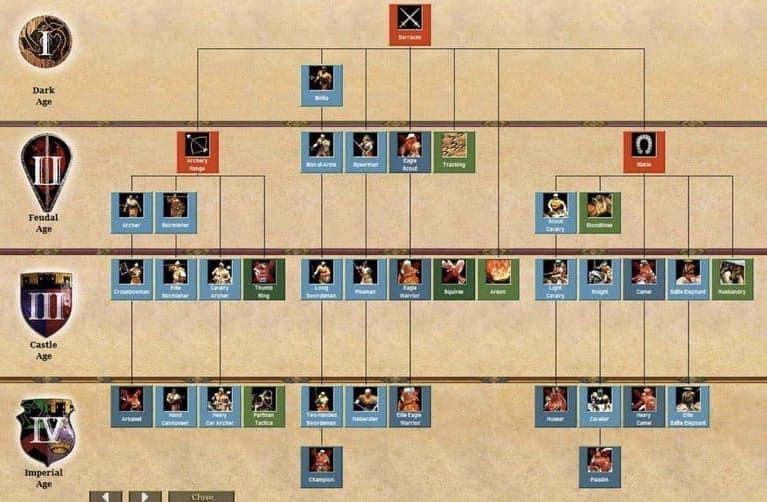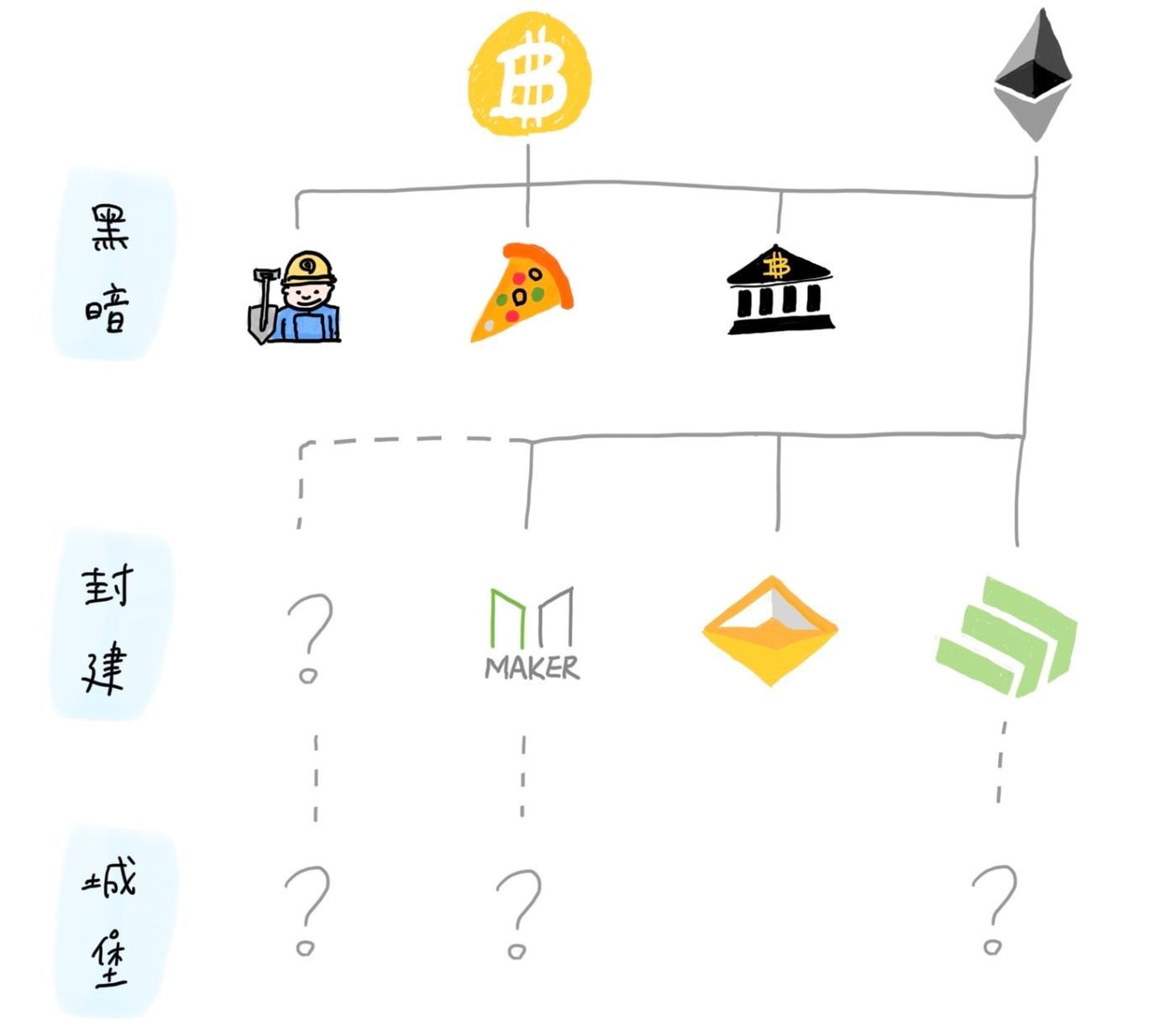Looking at the development of blockchain from "Empire of the Century"
Hi, I'm Xu Mingen, the author of Block Situation, and it's time for a bi-weekly public article again. Block Potential is a paid subscription media that provides members with 2 articles and 1 episode of podcast every week. The content is produced by me full-time, providing human-speaking, insightful blockchain graphics and audio interviews.

If you like the content I have made, you are welcome to become a member of the block potential and support me to continue to create new content for you. In addition, since last week, the block potential followed the example of Costco to provide a full 30-day money-back guarantee, so that everyone can buy with peace of mind. Welcome to experience it.
I wonder if you have played real-time strategy games such as "Empire of the Century" and "Red Alert" when you were young? I love playing old games and just revisited the classic Age of Empires II . If you have played it, you must be familiar with the technology tree below.

This article is not intended to be published in Bahamut, so it will not discuss the game strategy, but the technology tree can be used as a metaphor for the development of the blockchain. There are four shields on the far left of the technology tree, from top to bottom are the dark age, the feudal age, the castle age and the imperial age. Each time you level up to the next era, you can unlock more new technologies and buildings.
The most interesting thing about Empire of the Century is that it allows players to manipulate a real people in history, such as the Byzantines, Vikings or Persians. Each nation had different strengths and weaknesses, the Persians had a particularly strong cavalry, and the Vikings had a particularly strong navy. The technological development of a nation will be limited by its "nature". Only by mastering the characteristics of each nation and making up for each other's shortcomings can players win.
Mastering the timing of upgrades is also very important. Regardless of the chosen nation, all players start in the Dark Ages. There are very few things that can be done in the Dark Ages, except fishing, hunting, fruit picking, and building houses. Only when you have enough resources can you invest in the research and development of basic technology, upgrade the empire to the feudal era, unlock new buildings and arms, continue to develop new technologies, and finally build an army to defend against foreign enemies.
Not every new technology can directly help an empire level up. Some buildings and technologies are unlocked horizontally, indirectly promoting empire upgrades. In the process of upgrading, it may encounter many invasions by foreign enemies, and it is necessary to rebuild the homeland. Until enough technology is developed to build up its own strong city walls and fortifications, it will slowly move towards the era of emperors.
Unlocked layer by layer, attacked from time to time, but still have to move forward, just like the current blockchain development.
The Dark Ages of Blockchain
All technology begins in the dark ages. The player has only three villagers and a few sheep.
The concept of blockchain originated from the Bitcoin paper published by Satoshi Nakamoto in 2008, and the Bitcoin system was officially launched the following year. Since then, people have been able to start mining bitcoins with their own computers running mining software. But what can you do with bitcoin? There is no use at all other than turning left hand to right.
Until May 18, 2010, an American engineer, Laszlo Hanyecz, posted on the Bitcoin forum at the time that he was willing to exchange 10,000 Bitcoins for two boxes of pizza and deliver it to his door. He waited for 4 days, and it was not until May 22 that someone was finally willing to trade with him, which "unlocked" the trading function of Bitcoin.

When Bitcoin has transfer and transaction functions, another new "building" is unlocked - the exchange.
Exchanges are prone to hacker attacks, which attracts more people to invest in the research and development of new technologies to protect the security of exchanges, such as cold wallets that are not connected to the network, multi-signature mechanisms or asset custody rules. With the cyclical event of the halving of the Bitcoin issuance rate and the sudden incident of the largest MT.GOX exchange at the time, the currency price also washed up and down.
Just like the dark ages in the game, there are always only a few villagers who are actually building towns, and only a few developers have invested in the first few years of the blockchain. As more and more houses were built, the empire had enough resources to develop new technologies, build buildings, train troops, and also began to expand outwards, calling for more people to join.
Too bad I think the Bitcoin developer community has trapped itself in the dark ages.
In the past ten years, the use of Bitcoin has been limited to transfers and transactions (investment), and almost no new technology has been unlocked. It's like some players choose to stay in the dark ages for a long time, wanting to conquer the world with militias with the lowest defense and attack power. This is certainly a viable strategy. But when the technology of the opponents has been upgraded to the feudal age, the castle age or the imperial age, the militiamen will never be the opponents of the swordsmen and warriors.
Even though Bitcoin is more widely known, more people are now optimistic about the representative of the feudal era of blockchain - Ethereum (Ethereum).
The Feudal Age of Blockchain
After the advent of Ethereum in 2015, it also experienced a dark age when only transfers and transactions were possible. But with the lessons learned from Bitcoin, Ethereum took smart contracts into consideration in advance, and created a wave of ICO fundraising within two years.
ICO has allowed many startups to raise a lot of money from retail investors. The most representative sentence at the time was that startups had already used ICO to raise funds when VCs were still wearing their coats. It is a pity that ICO is accompanied by many fraud incidents, and many investors have lost their money. Until now, people's impression of ICOs is still mostly negative. But there are also good ICO projects. LikeCoin , which is currently used by many Chinese content creators, stood out at that time.
The only things that can develop in the Dark Ages are infrastructure and science. After entering the feudal era, we can finally develop more advanced technology. First, we see that MakerDAO develops a decentralized stablecoin that no longer needs to rely on Tether to manipulate market circulation behind the scenes like USDT. Where there is money, there is lending, and Compound immediately developed a decentralized lending market based on MakerDAO. From the current point of view, these two projects can be said to be the two key technologies in the feudal era of blockchain.
It is not difficult to understand the products of the dark age, such as transfers, wallets, and exchanges, but the technology of the feudal era is not so intuitive. It not only combines more economic models, but also considers the community governance model. Therefore, Block Potential has produced several episodes of content to discuss the operation principle of MakerDAO and the risks of the Compound lending market.

At the same time, we also see that many people still judge the overall development of the feudal era with fragmentary impressions of the dark times, and label the development of the blockchain as speculation or fraud. Even Warren Buffett has fallen into this myth . But you who have played "Empire of the Century" must know that the key to the decisive victory is to see who is the first to upgrade to the Castle Age.
The Castle Age of Blockchain
There is currently no blockchain leading Ethereum and entering the age of castles. Perhaps you may have heard of blockchains like IOTA , EOS or Tron claiming to be blockchain 3.0 or the Ethereum killer. But from the perspective of practical application, these are just marketing terms that attract the attention of the public. Not to mention the recent free mobile phone mining, the Pi Network that attracts people's attention will not be the future of the blockchain.
I think the efficiency and privacy issues of the blockchain are the technologies that the current feudal era is trying to break through. The dark age focused on basic science, the feudal age developed advanced science, and the castle age should focus on applied science. But what exactly is it, people have no game guides to refer to.
A healthier attitude should be, as Jobs said:
You can't connect the dots looking forward; you can only connect them looking backwards. So you have to trust that the dots will somehow connect in your future.
You can't connect the dots of an experience in advance; only in retrospect will you understand how the dots came together. So you have to believe that what you are experiencing now will be somehow connected in the future.
A few years ago, governments around the world were still arguing over the legality of virtual currencies, and then they pointed to ICO fundraising. But now people already know that Bitcoin and Ethereum are like basic technologies such as 3D printing, which regulate the use rather than limit the development of the basic technology.
People can 3D print toys, but what about 3D printing guns ? In the same way, I can issue Mingen coins with Ethereum , can TSMC issue shares with Ethereum? With the upgrade of the blockchain, there will only be more applications and more complex mechanisms in the future. Before Facebook proposed the Libra coin issuance plan, no one thought that the government would take the blockchain seriously. Governments, the Bank for International Settlements and the International Monetary Fund are now discussing the issuance and regulation of security tokens and national digital currencies.
Although there is no supervisory unit in Century Empire, the government is like the manager of the city, hoping that every building in the city will be neatly arranged, technology developed in an orderly manner, and easy to manage. However, government officials are also ordinary people, and it is impossible to foresee which new technologies will be unlocked in the future. When regulators in various countries are still classifying alternative coins and rushing to formulate regulatory guidelines for ICOs, the ICO boom has receded.
As blogger Ryan Sean Adams said, even the top blockchain investors can only grasp a few branches in the tech tree, and it is difficult to see the big picture. But this does not hinder the progress of the technology tree of the blockchain. After all, no one would have thought that a group of primitive people who originally lived in caves could land on the moon 100,000 years ago.
Like my work? Don't forget to support and clap, let me know that you are with me on the road of creation. Keep this enthusiasm together!


- Author
- More